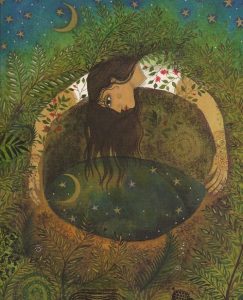Our Moving into Meditation class continues to focus on the Yoga Ethic of Svadhyaya or “self-study.” Self-reflection involves listening to ourselves and also listening to each other. In his latest book, The Lost Art of Conversation, Tibetan Buddhist scholar, teacher and writer Sakyong Mipham Rinpoche encourages us to approach listening as a form of auditory meditation. He writes:
“When we practice meditation, we strip away the words and come to an inexpressible experience of our own being that happens only when we let ourselves relax, feel who we are, and be there for it. . . . when we feel who we are in our hearts, then no matter what experience we are having, we are staying . . .
Meditation . . . allows us to rest in our own vulnerability and strength. . . . The first step is to allow ourselves just to feel. In feeling, there is a sense of unknowing and knowing. Instead of relating to it as a minor sensation, connect to your sense of feeling as a sign that you are alive.
. . . Equanimity toward what is happening engenders a quality of steadiness, and at the same time frees you to . . . move . . . into the space of possibility.”



